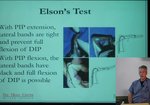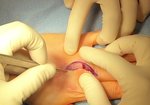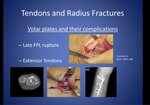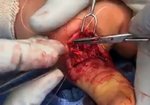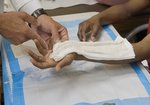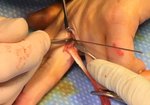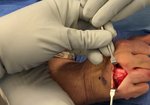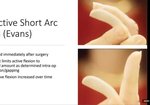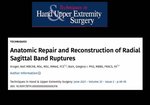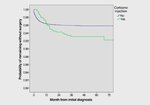
Video Player is loading.
Current Time 0:00
/
Duration 0:00
Loaded: 0%
0:00
Stream Type LIVE
1x
- 0.5x
- 0.75x
- 1x, selected
- 1.25x
- 1.5x
- 1.75x
- 2x
- Chapters
- descriptions off, selected
- captions settings, opens captions settings dialog
- captions off, selected
This is a modal window.
Beginning of dialog window. Escape will cancel and close the window.
End of dialog window.
10 seconds
Playback speed
This is a modal window. This modal can be closed by pressing the Escape key or activating the close button.
Outcome of Primary Tendon Grafts for Open Zone 3 Extensor Tendon Injuries
By
Jeff Ecker
FEATURING
Jeff Ecker
855 views
April 12, 2021
Open injuries of the extensor mechanism in zone three (dorsum of the proximal interphalangeal joint) ...
read more ↘ have poor outcomes. A retrospective analysis of 19 zone 3 extensor tendon injuries in 17 patients was performed. The treatment comprised wound excision and debridement, primary tendon graft to reconstruct the damaged/missing extensor tendon, skeletal fixation when required, local flaps to vascularize the zone of injury and immediate short arc motion therapy. Using the criteria defined by Geldmacher et al., the outcome was predicted to be poor in 47%, satisfactory 37% and good in 16% of cases. In this study the outcomes were excellent in 53%, good in 32% and satisfactory in 16% of cases. Mean range of motion was 75° (range 25° – 115°) at the proximal interphalangeal joint. Implementing the protocol described there is no longer the perception of a dismal outcome for these complex zone three extensor tendon injuries.
↖ read less
read more ↘ have poor outcomes. A retrospective analysis of 19 zone 3 extensor tendon injuries in 17 patients was performed. The treatment comprised wound excision and debridement, primary tendon graft to reconstruct the damaged/missing extensor tendon, skeletal fixation when required, local flaps to vascularize the zone of injury and immediate short arc motion therapy. Using the criteria defined by Geldmacher et al., the outcome was predicted to be poor in 47%, satisfactory 37% and good in 16% of cases. In this study the outcomes were excellent in 53%, good in 32% and satisfactory in 16% of cases. Mean range of motion was 75° (range 25° – 115°) at the proximal interphalangeal joint. Implementing the protocol described there is no longer the perception of a dismal outcome for these complex zone three extensor tendon injuries.
↖ read less
Comments 2
Login to view comments.
Click here to Login

